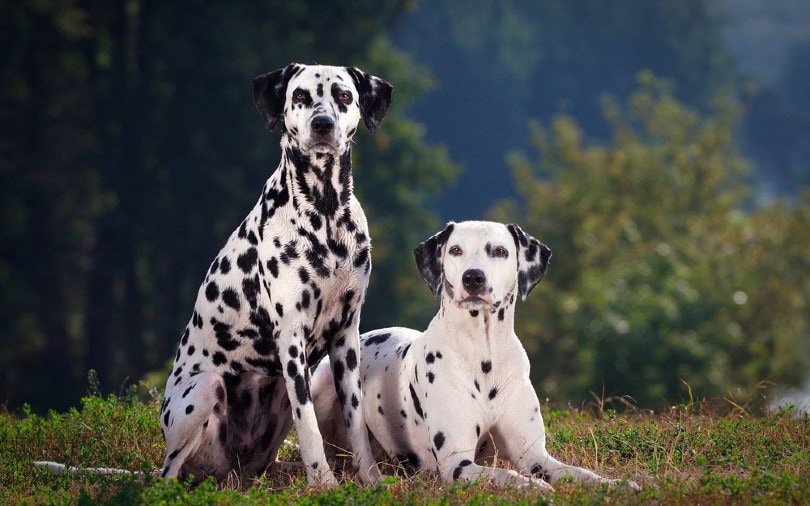Selective Breeding Secrets: Why Dogs Rule the Breed Ring

Introduction to Selective Breeding Secrets
Overview of selective breeding in dog breeding industry
Selective breeding is a powerful tool in the dog breeding industry that allows breeders to tailor specific traits in dogs based on desired characteristics. You have the exciting opportunity to shape the future of your beloved canine companions through selective breeding.
By carefully selecting breeding pairs with desirable traits such as intelligence, temperament, or physical conformation, you can work towards creating healthier and more resilient dog breeds. The process involves meticulous planning, genetic research, and a deep understanding of the breed standards.
Benefits and challenges of selective breeding processes
| Benefits of Selective Breeding | Challenges of Selective Breeding |
|---|---|
| - Improved Health: By selectively breeding for specific traits, breeders can proactively address genetic health issues in dog breeds. | - Inbreeding Risks: Inbreeding can lead to a higher risk of genetic disorders and reduced genetic diversity within the breed. |
| - Trait Enhancement: Selective breeding allows for the enhancement of desirable traits in dog breeds, such as superior agility or intelligence. | - Time and Resources: The process of selective breeding requires significant time, effort, and resources to carefully evaluate breeding pairs and monitor offspring. |
| - Consistency: Breeders can maintain consistency in desired traits across generations through selective breeding practices. | - Ethical Considerations: Ethical concerns may arise regarding the selection of specific traits over the overall well-being of the dogs. |
By embracing the secrets of selective breeding with a positive outlook, you can contribute to the advancement of dog breeding practices and the welfare of future generations of dogs.
The journey may present challenges, but with dedication and a commitment to responsible breeding practices, you can make a meaningful impact in shaping the future of dog breeds.

The Role of Genetics in Dog Breeding
Understanding the genetic principles behind selective breeding
You are now part of a fascinating journey into the world of selective breeding in the dog breeding industry. Through genetics, you hold the key to shaping the future of dog breeds.
With every deliberate selection of breeding pairs, you are paving the way for a new generation of healthier, more resilient dogs. The intricate dance of genes and traits is in your hands, guiding the path to desired characteristics.
Importance of genetic diversity in maintaining healthy dog breeds
The canvas upon which you paint the future of dog breeds is the rich tapestry of genetic diversity. Promoting genetic variability through selective breeding safeguards against the risks of inbreeding and genetic disorders. Each diverse trait you nurture in a breed adds a stroke of resilience and vigour, ensuring a brighter and healthier future for our canine companions.

Popular Dog Breeds Resulting from Selective Breeding
Breeds that have been extensively influenced by selective breeding
You are now stepping into a realm where the art of selective breeding has sculpted some of the most popular dog breeds we know today. From the loyal and affectionate Labrador Retriever to the elegant and regal Afghan Hound, each breed carries the legacy of generations shaped by deliberate genetic selection.
The influence of genetics in breeding has played a pivotal role in defining the distinct characteristics of these breeds, making them beloved companions in households worldwide.
Traits that make these breeds stand out in the breed ring
As you delve further into the world of these selectively bred breeds, you will discover a myriad of traits that set them apart in the competitive breed ring. The Siberian Husky's striking blue eyes and endurance, the Poodle's intelligence and hypoallergenic coat, and the Dalmatian's unique spotted coat and agility are just glimpses of the diverse traits honed through selective breeding. Each of these breeds showcases the power of genetic selection in amplifying specific qualities that capture the hearts of dog enthusiasts.

Selective Breeding Techniques Used in Dog Breeding
Overview of the selective breeding methods used by dog breeders
As you explore the world of selective dog breeding, you will appreciate the meticulous techniques employed by dedicated breeders. From line breeding to outcrossing, breeders utilize various methods to enhance desired traits while maintaining genetic diversity.
Line breeding focuses on pairing closely related individuals to intensify specific characteristics within a breed, while outcrossing introduces genetic variation by breeding unrelated dogs. These techniques, along with inbreeding and selective pairing, enable breeders to fine-tune the traits of future generations, ensuring that each litter embodies the breed standard.
Ethical considerations and controversies surrounding selective breeding
Delving into selective breeding also unveils a spectrum of ethical considerations and controversies surrounding the practice. While selective breeding allows for the preservation and enhancement of desirable traits, it can also raise concerns about the potential for inherited health issues and reduced genetic diversity. Responsible breeders navigate these complexities by prioritizing the health and well-being of their dogs, conducting health screenings, and advocating for ethical breeding practices.
By engaging in open dialogue and transparency, breeders work towards maintaining the integrity and welfare of the breeds they are passionate about.

The Impact of Selective Breeding on Health and Behavior
Effects of selective breeding on the physical health of dog breeds
Exploring the effects of selective breeding on the physical health of dog breeds reveals both positive advancements and potential challenges. Through careful selection and breeding practices, breeders have successfully enhanced desired traits such as structure, coat type, and size in various breeds. This has led to the development of healthier and more resilient dogs that excel in their respective roles, whether as companions, working dogs, or show champions.
However, the pursuit of these physical traits can sometimes result in unintended consequences, such as an increased risk of certain hereditary conditions or structural abnormalities. Responsible breeders mitigate these risks by prioritizing health screenings, genetic testing, and ongoing research to ensure the long-term well-being of each breed.
Behavioural traits influenced by selective breeding practices
Engaging in discussions about the behavioural traits influenced by selective breeding practices highlights the intricate interplay between genetics and the environment. Selective breeding has played a pivotal role in shaping the temperament, instincts, and trainability of different dog breeds.
From the herding instincts of Border Collies to the protective nature of German Shepherds, each breed exhibits unique behavioural characteristics that have been honed through generations of selective breeding. While these breed-specific traits contribute to the diversity and versatility of dogs, it is essential for breeders and owners alike to prioritize proper socialization, training, and enrichment to support healthy behavioural development.
By understanding the impact of selective breeding on behaviour, we can foster strong bonds with our canine companions and promote positive interactions within our communities.

Advancements in Selective Breeding Technology
Technological innovations that have revolutionized selective breeding
Emerging technologies have revolutionized the landscape of selective breeding, opening up new possibilities for enhancing the health and behaviour of dog breeds. Innovations such as genome sequencing, CRISPR gene editing, and advanced reproductive techniques have empowered breeders to make informed decisions and accelerate the breeding process.
By leveraging these cutting-edge tools, breeders can more effectively identify desirable genetic traits, eliminate harmful mutations, and diversify gene pools to promote overall breed health and vitality. The ongoing integration of technology in selective breeding holds tremendous promise for shaping the future of canine genetics and ensuring the continued well-being of our beloved companions.
Role of genetic testing in enhancing selective breeding outcomes
Utilizing genetic testing has become a cornerstone in optimizing selective breeding outcomes, offering breeders valuable insights into underlying genetic predispositions and potential health risks. By conducting comprehensive DNA screenings and genetic analyses, breeders can make informed breeding decisions prioritising future generations' health, temperament, and longevity.
Genetic testing plays a crucial role in identifying carriers of hereditary conditions, promoting genetic diversity, and advancing the overall well-being of dog breeds. Through the integration of genetic testing protocols, breeders can navigate the complexities of selective breeding with confidence and compassion, ensuring that each generation of puppies embodies the best qualities of their lineage.

Responsible Breeding Practices and Ethical Considerations
The importance of responsible breeding practices in maintaining breed standards
Embracing responsible breeding practices is vital in upholding the integrity and standards of dog breeds. As a breeder, it is essential to prioritize health, temperament, and conformation when selecting breeding pairs. Adhering to breed standards and ethical guidelines can help preserve the unique characteristics and qualities that define each breed.
Through conscientious breeding practices, you contribute to the overall well-being and long-term sustainability of the breed, ensuring that future generations continue to embody the traits that make them beloved companions.
Ethical considerations when selecting breeding pairs and managing genetic diversity
Recognizing the ethical implications of selective breeding is paramount in maintaining genetic diversity and minimizing the prevalence of hereditary conditions. When selecting breeding pairs, it is crucial to prioritize genetic compatibility, health screenings, and temperament assessments to promote the overall welfare of the offspring.
By considering the long-term implications of breeding decisions and prioritizing the gene pool's health and diversity, you can positively impact the future generations of the breed. Upholding ethical standards in breeding practices ensures that each generation of puppies is born from responsible and compassionate choices, laying the foundation for a healthy and vibrant canine population.

Selective Breeding Success Stories in Dog Breeding
Case studies of successful selective breeding programs in the dog breeding industry
Successful selective breeding programs in the dog breeding industry have shown the impact of responsible breeding practices. Through meticulous consideration of genetics, health, and temperament, breeders have produced generations of dogs that exemplify breed standards while maintaining robust health and desirable traits. These success stories highlight the power of ethical breeding decisions in shaping the future of dog breeds.
Lessons learned and best practices for aspiring dog breeders
You can draw valuable lessons from these success stories as an aspiring dog breeder. By prioritizing health, genetic diversity, and breed standards in your breeding practices, you can contribute to the sustainability and well-being of the breeds you work with.
Learning from the best practices of successful breeders, you can ensure that your breeding program is built on a foundation of integrity, compassion, and dedication to preserving the unique qualities of each breed.

